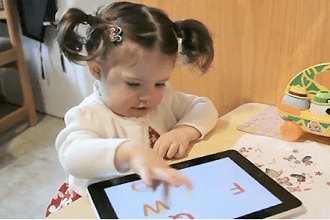Yesterday while surfing on the internet, I came across a blog. This blog had a neat compilation of information on astronomy, planets, universe, etc. People had commented on the posts, and liked some. Now, what can be the wildest guess? The blog was being operated by a student of grade 7!!! These are the types of outcomes from introduction of technology right in the elementary stage.
According to Collin’s Dictionary, Elementary education means “the first six to eight years of a child’s education”. This is the time where habits can be easily generated, minds molded and tracks defined. This is when a child needs the maximum freedom to think creative and also the highest level of guidance on each step. Technology intends to cater the same.
Technology is a tool and with every tool comes its advantages and disadvantages. As it is said, “Even gun was invented, just as a tool.” With proper governance and guidance of teachers, they can increase the productivity manifolds.
Why would Elementary students need technology for education?
The use of technology has been accepted in higher studies, where there is a need for research and extra study. But, for elementary students it is still a matter of debate. While on the one hand, technology makes the job of teachers easier, it can make the teacher a bit demotivated. On one side there is an increase in collaboration of students, discussions etc., on the other hand methods of teaching must be innovative.
Introducing technology in this early stage prepares the young minds for tech-friendliness, which is eventually inevitable as they grow up. During the preschool years, children should have many opportunities to explore open-ended, developmentally appropriate software programs in a playful, supportive environment. These experiences will help them to develop the basic skills needed to use technology equipment, such as opening and closing programs, saving and printing documents, and navigating the screen using a mouse. This will help children become confident in their ability to use a computer and will provide the foundational skills needed to use more advanced applications for purposeful work as they grow older.
For elementary students there are numerous interactive software which can help them be creative and self-indulged. Elementary students are more comfortable with graphics or art or drawing in their studies. They also like to have an interactive interface. The software are designed keeping these things in mind as for example,
WriteOn app, lets your child practice their name, follow proper strokes for both Block and Script letters, has multiple lines so they can see their progress, sounds in both American and UK English, letter sounds, phonetic sounds, animated letter strokes, cute animal images, write in multiple colors, erase last stroke, and more. It allows children to express themselves, frees them from the fine motor demands of letter formation. For many children these tools can serve as adaptive or assistive technology to make the physical act of writing less frustrating.
Kid Pix are an excellent way to introduce children to open-ended exploration of the computer. Children’s art programs generally provide a wide range of choices for expressing ideas, from freehand drawing to the use of stamps, text, or other special effects.
Kidspiration (Inspiration Software) allows children to depict many of the ideas and concepts they are working with and put them in relation to one another pictorially. These tools allow children to create webs and other schematics that visually represent their understanding of a topic.
However, as already discussed there are a few areas worth pondering over before using technology for elementary education. The teacher has to be well versed in using technology and handling problems. The use of technology should be done to assist teaching and not just for the sake of using technology. The National Educational Technology Standards developed by the International Society for Technology in Education (ISTE) give a good idea of the knowledge and skills that children should be developing in the early years. They can serve as a guide for choosing programs and applications for children to use.
Teachers, in accordance with curriculum standards, must decide what children need to learn and do and then choose from a repertoire of teaching practices to help children reach these goals. There are considerable number of points which lead towards the positive effects of technology on children’s learning and development.
Thus, it is a huge responsibility to help the “futures” understand how to use technology in safe and enriching ways.


